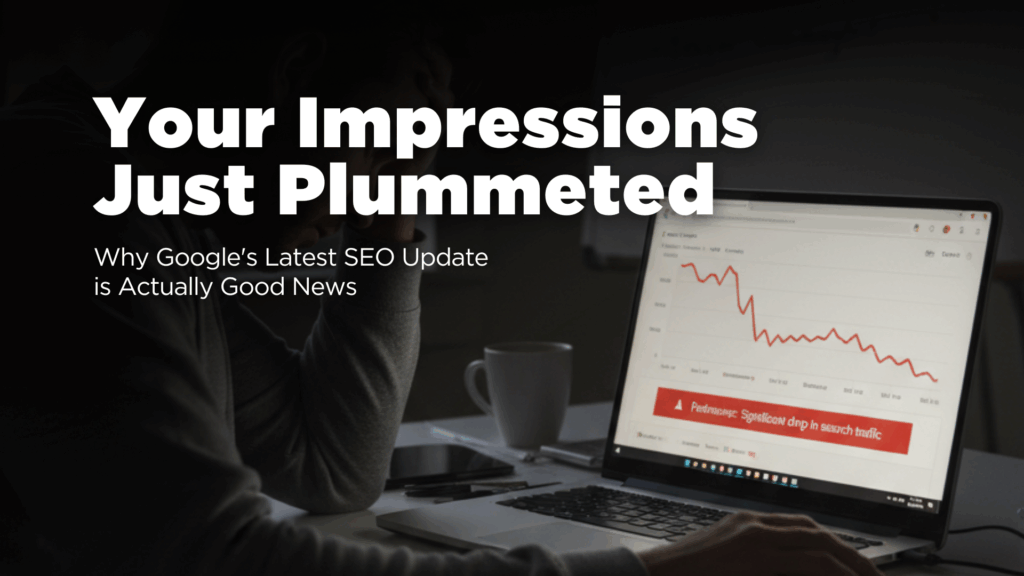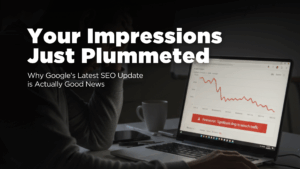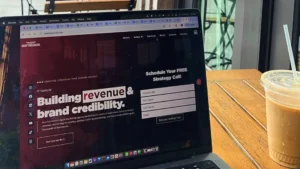If you’ve checked your Google Search Console (GSC) data recently, you probably saw a shocking drop. Impressions are down, and many of your lower-ranking keywords have vanished from your reports.
Don’t panic! Your site wasn’t penalized. You just got a huge dose of reality.
This massive shift is due to a quiet, but critical, technical update: Google removed support for the &num=100 URL parameter.
What Exactly Happened and Why the Data is Down
For years, the &num=100 parameter allowed SEO tools, rank trackers, and other automated scrapers (including those potentially used for training AI) to efficiently load up to 100 search results on a single page request.
Every time one of these bots loaded that 100-result page, Google recorded an impression for every site on it, even for pages ranking at position #99.
When Google disabled this parameter in mid-September, those automated, bot-driven impressions disappeared overnight.
The Staggering Stats
An analysis of 319 web properties by Tyler Gargula of Locomotive Agency confirms the disruption is widespread:
- 87.7% of sites saw impressions drop in GSC.
- 77.6% of sites lost unique ranking terms, with short and mid-tail keywords hit the hardest.
- Fewer queries now appear on Page 3+ of your reports.
The takeaway? Much of the impression data you were tracking was inflated by bots, not driven by real users.
What This Means for Your SEO Strategy
While the plummeting numbers can look terrifying to stakeholders, this change is a positive step toward cleaner, more accurate data. The industry is essentially hitting the “reset” button.
1. New Baseline for Organic Growth
Consider your data from mid-September onward as your new, accurate baseline. You’re finally looking at official, organic numbers that reflect impressions generated by actual human searchers, not automated crawlers. Your focus should shift entirely from inflated impression counts to metrics that matter: Clicks, Click-Through Rate (CTR), and Conversions.
2. Focus Less on Evergreen, More on Timely Content
The change hints that Google is tightening its data moat, likely to reduce the amount of content scraped by AI models.
To stand out in this environment, it’s wise to:
- Reduce your production of generic evergreen content.
- Increase your focus on seasonal, trendy, or newsworthy content that establishes authority and can’t be easily replicated by AI.
3. Unknown Impact on GEO & AI Search
While the data integrity is improving, the full impact of removing the &num=100 parameter on local SEO (GEO) and the future of AI-driven search visibility is still unclear. The new normal will require continuous monitoring and fast adaptation.
Your Action Plan: Don’t Panic, Adapt Fast
- Re-Educate Stakeholders: Explain that the impression drop is a data cleansing event, not a ranking penalty. Your actual traffic to Pages 1 and 2 likely remains stable.
- Annotate Your Reports: Mark mid-September in all your GSC dashboards as the official data break point. Do not compare this month’s impressions to last month’s.
- Prioritize Page One: Since the long tail (positions 30+) visibility was largely ghost data, put all your energy into dominating Page 1 and achieving Position Zero (featured snippets).
The goal of SEO has always been to win real clicks from real users. Now, your reporting finally reflects that truth.

Let Adapting Social Guide Your Next Move
The removal of the &num=100 parameter is more than just a reporting change, it’s Google challenging the SEO industry to focus on real value. With inflated numbers gone, your strategy must be sharper than ever. At Adapting Social, we specialize in building high-quality, user-focused content strategies that thrive in this new environment. We’ll help you re-baseline your data, focus on high-impact keywords, and build content that earns clicks from real people, not bots.
Don’t let data fluctuations slow your growth. Contact Adapting Social today to refine your SEO strategy and secure your spot on Page 1.




